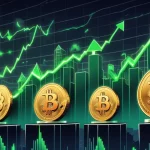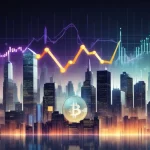XRP 2025 Outlook: Legal Wins, Institutional Surge, and WinnerMining Scam Warning

XRP’s Big 2025: Legal Triumphs, Institutional Waves, and a Shady Mining Trap
Is XRP on the cusp of becoming a linchpin in digital finance for 2025, or is the buzz just another crypto mirage hiding some ugly pitfalls? With Ripple’s legal battles finally in the rearview, a pro-crypto regulatory shift in the U.S., and big money piling in, the optimism is hard to ignore. Yet, amidst the excitement, dubious schemes like WinnerMining are peddling daily XRP riches that stink of snake oil. Let’s break down the good, the bad, and the downright sketchy.
- Legal Breakthrough: Ripple’s $125 million SEC settlement clears a major roadblock for XRP’s future.
- Regulatory Green Light: U.S. policies like the GENIUS Act and Federal Reserve nods bolster crypto’s legitimacy.
- Shady Schemes: WinnerMining’s promise of 630 XRP daily smells like a scam waiting to fleece the unwary.
Legal Victory: Ripple Breaks Free from SEC Shackles
For years, XRP has been dragged through the mud by Ripple’s legal showdown with the U.S. Securities and Exchange Commission (SEC). The saga kicked off in late 2020, with the SEC alleging that Ripple sold XRP as an unregistered security, a charge that spooked investors and led to delistings on major exchanges like Coinbase. The uncertainty tanked XRP’s price and stifled institutional interest. Fast forward to August 2025, and that nightmare is over. Ripple settled for a $125 million fine, with both sides dropping appeals. Building on a 2023 ruling by Judge Analisa Torres, the court confirmed XRP isn’t a security in secondary trading—a huge win that’s unshackled the token from years of regulatory baggage. This isn’t just a slap on the wrist; it’s a signal to the market that XRP is open for business. As one observer noted:
“2025 is shaping up to be a huge year for XRP. After years of uncertainty, the landscape is finally clearing.”
This resolution has done more than just boost morale; it’s removed a legal albatross that deterred banks and financial giants from touching XRP. With the SEC’s “bad actor” label waived, Ripple and its native token are now seen as a safer bet for partnerships and adoption. For more details on the background of this legal battle, you can explore Ripple Labs’ history and SEC case. But legal wins don’t guarantee a smooth ride—more on that later.
Regulatory Tailwinds: A Crypto-Friendly Shift in the U.S.
Beyond the courtroom, the broader U.S. regulatory environment is starting to look less like a minefield for cryptocurrencies. The GENIUS Act, a piece of legislation focused on legalizing stablecoins, might not directly name XRP, but it’s part of a bigger push to make government rules around digital assets clearer. Think of it as the feds finally laying down some ground rules instead of playing whack-a-mole with crypto projects. XRP, which functions as a bridge currency for cross-border payments rather than a stablecoin, still benefits indirectly from a less hostile climate. For deeper insights into this legislation, check out the latest updates on the GENIUS Act and its implications. Add to that the pro-crypto stance under the Trump administration—complete with executive orders promoting blockchain innovation and the appointment of Paul Atkins as SEC Chair—and you’ve got a recipe for mainstreaming digital assets.
Even more eyebrow-raising is the reported support from Federal Reserve Vice Chair Michelle Bowman, who’s been vocal about integrating blockchain and AI into financial systems. When central bankers start singing tech’s praises, you know something’s shifting. While this doesn’t mean the Fed is endorsing XRP specifically, it paints a picture of traditional finance warming up to the kind of disruption XRP aims to deliver. As one bullish voice put it:
“XRP is now regulated, safe, and institution-ready — and you can get in too.”
Yet, let’s not get too cozy. Regulatory clarity is a double-edged sword—today’s green light could turn red under a future administration or if geopolitical tensions flare. Crypto’s still a political football, and XRP isn’t immune to those risks.
Institutional Surge: Big Money Places Bets on XRP
XRP isn’t just a speculative play for retail traders anymore; it’s catching the eye of heavy hitters. Its core strength lies in Ripple’s On-Demand Liquidity (ODL) service, a payment solution that uses XRP to enable near-instant, low-cost cross-border transfers without the need for pre-funded accounts. Imagine sending money overseas as easily as an email, compared to the snail-mail pace of traditional banking systems like SWIFT, which can take days and rack up hefty fees. In Q3 2024 alone, $2.5 billion in transactions flowed through XRP via ODL, with major players like SBI Holdings, Standard Chartered, Santander, and American Express integrating RippleNet into their operations. This isn’t theoretical—it’s real-world utility.
Then there’s the eye-popping claim of Thumzup Media, a Nasdaq-listed company, dumping $50 million into XRP and mining assets, with plans to scale up to $250 million. If verified, that’s not pocket change; it’s a signal that institutional players see XRP as a serious contender in disrupting the clunky, overpriced world of global finance. For a deeper dive into future projections, take a look at this analysis of XRP’s institutional adoption by 2025. Looking to October 2025, two potential game-changers loom: spot XRP exchange-traded funds (ETFs) and Ripple’s bid for a national bank charter. ETFs, for the uninitiated, are investment funds traded on stock exchanges, allowing big investors to buy exposure to XRP without directly owning it—a move that could flood the market with capital. Prediction markets like Polymarket peg an 84% chance of approval for applications like 21Shares’. Meanwhile, a bank license would cement Ripple’s legitimacy in traditional finance. Price predictions for XRP by year-end 2025 range wildly—bullish analysts eye $3 to $5, moderates sit at $1.50 to $2.50, and bears warn of a drop below $1 if headwinds hit. XRP’s recent run to $3.10 (a 481% surge) before settling at $2.94 shows both its potential and its rollercoaster nature. For more on how ETF approvals could shake things up, see this perspective on XRP ETF impact on the market.
Still, institutional hype doesn’t erase XRP’s volatility or the fact that not every “next big thing” in crypto delivers. Remember Litecoin or EOS? Flashy promises don’t always equal lasting value.
XRP’s Niche: A Pragmatic Disruptor, Not a Bitcoin Clone
Let’s zoom out and place XRP in the broader crypto puzzle. Unlike Bitcoin, the gold standard for decentralization and a store of value against fiat inflation, or Ethereum, the king of smart contracts and decentralized apps, XRP’s laser focus is on fixing the inefficiencies of global money movement. It’s not trying to be a digital gold or a programmable blockchain—and frankly, it shouldn’t. Its role in slashing costs and delays in cross-border payments is a niche Bitcoin doesn’t fill, nor should it, given BTC’s strength as a decentralized hedge. In the spirit of effective accelerationism, XRP’s push against bloated financial infrastructure is a win for disrupting the status quo, even if it’s not as ideologically “pure” as some Bitcoin maximalists demand.
That said, decentralization purists have valid gripes. Ripple holds over 50% of XRP’s total supply in escrow, releasing 1 billion tokens monthly—a level of control that raises eyebrows compared to Bitcoin’s fully distributed, miner-driven model with a fixed issuance cap. This centralized influence over supply dynamics can spook those who see crypto as a bastion of freedom from meddling hands. Still, XRP’s pragmatic trade-offs for speed and efficiency in payments make it a unique player, not a competitor to BTC but a complement in the financial revolution.
Red Flags: WinnerMining’s Too-Good-to-Be-True Pitch
Now, let’s slam on the reality brakes before the hype derails us completely. Enter WinnerMining, a cloud-based mining service aggressively marketed as your ticket to “pocket XRP daily” without the hassle of owning hardware. For those new to the term, cloud mining means renting computational power from a third party to mine crypto remotely—no rigs, no tech skills needed. WinnerMining claims to use green energy (solar, hydro, wind) and offers contracts from $100 to $100,000 with daily payouts. Their wildest boast? Earning up to 630 XRP per day through a “fully automated” system. Their pitch practically slaps you in the face with:
“Imagine this: 630 XRP hits your wallet every single day — fully automated. No rigs, no fuss, no waiting. Crazy, right?”
Crazy? More like a flashing neon sign screaming “scam ahead.” The crypto graveyard is packed with failed cloud mining schemes that overpromise and underdeliver—or just flat-out steal your money. WinnerMining offers zero verifiable evidence—no audits, no transparent operational data, nothing to back up their absurd return claims. At current prices, 630 XRP daily is a fortune, far beyond what even high-end mining setups could realistically achieve. Worse, the platform hosting their sponsored content, CaptainAltcoin, explicitly washes its hands of any endorsement or responsibility for their assertions. For a closer look at their questionable promises, check out this discussion on WinnerMining’s XRP daily claims. This isn’t just a warning; it’s a blaring siren. If you’re curious about community skepticism, there’s more on platforms like Reddit regarding WinnerMining scams, and even Quora questioning the legitimacy of such XRP mining services. While 2025 is being hyped with taglines like:
“2025 is XRP’s year: compliance, adoption, and mainstream growth.”
We’re calling absolute bullshit on unverified get-rich-quick nonsense. At Let’s Talk, Bitcoin, we stand for decentralization, privacy, and shaking up the old guard, but we have zero patience for scammers preying on FOMO. XRP’s real value—its utility in payments and growing institutional backing—doesn’t need to be tainted by association with shady outfits. If you’re looking to invest, focus on fundamentals like ODL adoption or ETF catalysts, not some crypto equivalent of a late-night infomercial hawking miracle cures.
Risks and Reality Checks for 2025
Even with legal wins and institutional buzz, XRP isn’t a guaranteed jackpot. Market volatility is a constant in crypto—XRP’s 481% surge to $3.10 and dip to $2.94 is proof of that wild ride. Delays in ETF approvals could dampen momentum, and while the current U.S. administration leans pro-crypto, a future policy flip could reintroduce uncertainty. Competition is another thorn—other payment-focused blockchains like Stellar Lumens or even SWIFT’s own blockchain experiments could chip away at XRP’s edge. Then there’s the technical side: can Ripple’s network scale if adoption explodes, or will bottlenecks emerge? And let’s not forget macro factors—global economic downturns or geopolitical flare-ups could tank risk assets like crypto, regardless of fundamentals. For a broader view on how regulatory clarity might influence XRP’s price, see this analysis of Ripple’s SEC settlement impact on XRP.
Historically, XRP has weathered brutal crashes tied to legal woes, and while the SEC settlement changes the game, it’s not a bulletproof shield. Bearish forecasts of sub-$1 prices aren’t just pessimism; they’re a reminder that hype cycles often end in harsh corrections. XRP’s journey mirrors the broader crypto struggle—enormous potential tangled up with messy realities.
Key Takeaways and Questions for XRP in 2025
To navigate this complex terrain, here are some critical points and questions worth chewing on, along with our no-nonsense take on each:
- What does Ripple’s SEC settlement mean for XRP’s trajectory in 2025?
It’s a massive boost, clearing a legal hurdle with the $125 million fine resolution in August 2025, confirming XRP isn’t a security in secondary trading, and opening doors for investor and institutional trust. - How do U.S. regulatory shifts like the GENIUS Act impact XRP?
Though focused on stablecoins, the GENIUS Act contributes to a friendlier crypto landscape, indirectly supporting XRP by reducing regulatory uncertainty and fostering a safer space for digital assets. - Can WinnerMining’s claim of 630 XRP daily be trusted?
Hell no. There’s no proof behind their promises, and cloud mining is notorious for scams. Avoid these schemes and focus on verified investment avenues for XRP exposure. - What are the biggest risks for XRP investors eyeing 2025?
Volatility, potential ETF approval delays, regulatory reversals, competition from other payment systems, and broader economic downturns could all derail gains, even with strong fundamentals. - How could XRP ETF approvals shape its price and adoption?
With an 84% approval likelihood on platforms like Polymarket, ETFs could unleash billions in institutional capital, spiking demand and prices, though speculative surges often crash hard afterward.
XRP’s path forward embodies the chaotic promise of blockchain tech—disruptive potential wrestling with regulation, market swings, and outright fraud. We’re all for accelerating the downfall of outdated financial systems, but not at the expense of integrity. Keep your focus on XRP’s real wins—legal clarity, real-world payment use, and institutional traction—and steer clear of the con artists promising overnight wealth. That’s the raw truth we’re sticking to.



